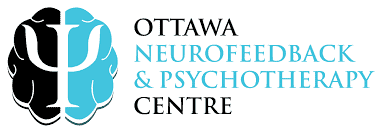Newer, more specialized, and more innovative approaches to mental health treatment are on the rise, and among these approaches is transdiagnostic therapy. Exploring the concept, implementation, and benefits of transdiagnostic therapy proves to be essential as this approach is inching towards is a promising approach to mental health treatment as it aims to transcend diagnostic boundaries.
How Does Transdiagnostic Therapy Work?
Transdiagnostic therapy is basically a combination of psychological treatments and other interventions to address underlying processes that are common across a range of mental health disorders. Transdiagnostic therapy doesn’t target the symptoms of a specific disorder; rather, it derives from the observation that multiple mental health conditions have common root causes, and among these causes are cognitive and emotional dysregulation.
An Overview of the Transdiagnostic Approach
The transdiagnostic approach’s defining feature is its emphasis on underlying cognitive and emotional processes across various mental health disorders. This approach allows for more flexible and individualized treatment plans that can adapt to each patient’s unique needs and challenges. This approach also seeks to address the fundamental emotional processes and cognitive vulnerabilities that contribute to various psychological conditions.
Knowing the Transdiagnostic Treatment Manual
The transdiagnostic treatment manual is the official guide for mental health professionals who would want to implement the approach. The transdiagnostic treatment manuals often include outlines of the key principles as well as the techniques of the therapy. You can also find case examples and resources for assessment and planning for treatment.
Most transdiagnostic treatment manuals include not only the steps and techniques needed for the therapy, but also the latest research and evidence-based practices that can only be found weaved together in the transdiagnostic approach. More importantly, it also contains some elements of cognitive-behavioral therapy (CBT), as well as emotion-focused therapies, and mindfulness techniques.
What A Transdiagnostic Treatment Plan Looks Like
In a transdiagnostic treatment plan, the therapist and patient collaborate to identify the patient’s goals, pinpoint cognitive and emotional processes that contribute to the patient’s distress, and develop strategies for managing these processes. This collaborative and personalized approach can lead to a more engaging and effective therapy, and you’re likely to get the best results possible.

Transdiagnostic Therapy Techniques
A multitude of techniques employed in transdiagnostic therapy like mindfulness, exposure therapy, cognitive-behavioural interventions, and emotion regulation training. The goal of these techniques is to give clients ready-made strategies for managing and treating different mental health challenges.
Unified Protocol for Transdiagnostic Treatment of Emotional Disorders
The Unified Protocol (UP) is a program that contains all the principles of transdiagnostic treatment. It’s designed to address multiple emotional disorders like anxiety and depression. UP focuses on both core emotional and cognitive processes, combining elements of cognitive-behaviour therapy with mindfulness and emotion-focused therapy to make a patient-centered treatment plans that can be applied to most cases.
Specialized Types of Transdiagnostic Therapy
1. Transdiagnostic Therapy for Anxiety
Proven to be effective for anxiety disorders, transdiagnostic therapy addresses factors like cognitive biases and maladaptive coping mechanisms that are all believed to contribute to many types of anxiety.
Aside from this, transdiagnostic therapy for anxiety also aims to identify and address the common factors that contribute to various anxiety disorders, such as cognitive distortions and emotional dysregulation. Meanwhile, other techniques such as exposure therapy and cognitive restructuring are utilized to make clients confront and modify both their unhealthy and unhelpful thoughts and behaviours.
2. Transdiagnostic Therapy for Depression
Just like how it’s used against anxiety disorders, transdiagnostic therapy also targets the commonalities in depressive disorders. Some of these common underlying themes include emotional dysregulation, rumination, and general negative thinking. Therapists are to train their clients regarding the needed strategies to disrupt their self-destructive thought patterns and regulate their emotions, which may lead to significant mood stabilization and better overall well-being.
Additionally, this approach promotes a deeper understanding of depression beyond its surface-level manifestations, allowing for interventions that address the client’s experience with the condition. With this method, therapists can provide more efficient and effective treatment options while reducing the risk of relapse and recurrence among clients.
3. Transdiagnostic Therapy for OCD
Also treatable with elements of the transdiagnostic approach, obsessive-compulsive disorder or OCD makes use of the gold standard called ERP or exposure with response prevention. This explores transdiagnostic cognitive processes that fuel compulsions, including one’s intolerance of uncertainty or one’s perfectionism.
When we explore and target these transdiagnostic concepts, we increase the possibility of a successful treatment, as the transdiagnostic approach makes clients better understand how they perceive their obsessions, and how this leads to more compulsive behaviours.
4. The Transdiagnostic Approach and Cognitive Behaviour Therapy
Lastly, a transdiagnostic approach mixed with cognitive-behaviour therapy (CBT) means applying CBT principles across a multitude of disorders. This approach leans more towards the cognitive and behavioural processes that heavily affect mental health issues, regardless of the diagnostic label.
5. The Transdiagnostic Approach and Emotional Disorders
When it comes to treating emotional disorders, a transdiagnostic approach addresses psychological phenomena like rumination, emotional avoidance, and experiential avoidance. By targeting these commonalities, this approach can improve emotional regulation and reduce distress across a range of emotional disorders.
The Transdiagnostic Approach: A Game Changer in Therapy
By focusing on shared factors, therapists can create targeted interventions that are effective for a wide range of emotional disorders rather than employing specific treatments tailored to each diagnosis individually. This comprehensive model offers a promising avenue for understanding and managing emotional disorders more effectively by targeting core mechanisms rather than symptomatology alone.
Author Joanna Jeffers, M.A., C.Psych.




